“Can you believe scientists successfully brought a ‘zombie’ virus back to life after it lay dormant for 48,500 years in permafrost?”
The warming temperatures in the Arctic are causing the thawing of permafrost, the frozen layer of soil beneath the ground. This thawing process has the potential to awaken viruses that have been dormant for tens of thousands of years, posing a potential threat to the health of both animals and humans.
Although the notion of a pandemic triggered by a long-dormant disease might seem like science fiction, scientists caution that the associated risks, while currently low, are not to be underestimated. Furthermore, thawing permafrost poses the additional threat of releasing chemical and radioactive waste from the Cold War era, potentially harming wildlife and disrupting ecosystems.
“There’s a lot happening with the permafrost that is worrisome, and it really emphasizes why it’s crucial to maintain as much of the permafrost as frozen as possible,” remarked Kimberley Miner, a climate scientist at the NASA Jet Propulsion Laboratory at the California Institute of Technology in Pasadena, California.
Permafrost, covering a significant portion of the Northern Hemisphere, has been a crucial element in the Arctic tundra and boreal forests of places like Alaska, Canada, and Russia for ages. Acting as a time capsule, it safeguards ancient viruses and preserves the mummified remains of extinct animals. Recent discoveries, including two cave lion cubs and a woolly rhino, highlight the valuable insights scientists gain from studying these well-preserved specimens.
Permafrost is an excellent storage medium not just because it’s cold, but also due to its oxygen-free and light-restricted environment. However, the Arctic is experiencing warming at a rate up to four times faster than the global average, leading to the weakening of the top layer of permafrost.
To understand the risks of frozen viruses, Professor Jean-Michel Claverie from Marseille, France, tested soil samples from Siberian permafrost. His goal was to check if the viral particles in the samples were still infectious. He calls these potential threats “zombie viruses” and, interestingly, he found some during his research.
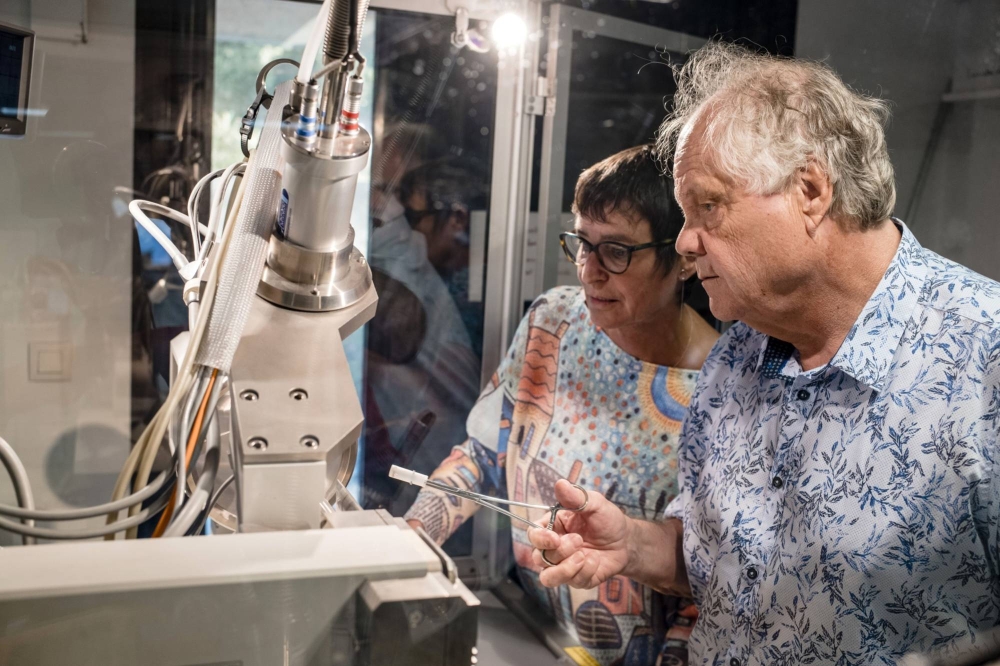
The Virus Hunter
In 2003, Jean-Michel Claverie discovered giant viruses, a distinct type larger than typical viruses and visible under a regular light microscope, making them suitable for lab study.
His interest in frozen viruses grew from Russian scientists reviving a wildflower in 2012 from a 30,000-year-old seed tissue found in a squirrel’s burrow. In 2014, Claverie successfully revived a virus from permafrost, making it infectious after 30,000 years. For safety, he chose a virus that only targeted single-celled amoebas, not animals or humans. This achievement was repeated in 2015 with a different virus type, also focused on amoebas.
In a recent study published on February 18 in the journal Viruses, Claverie and his team isolated various strains of ancient viruses from permafrost samples across seven locations in Siberia. The research demonstrated that each strain could infect cultured amoeba cells.
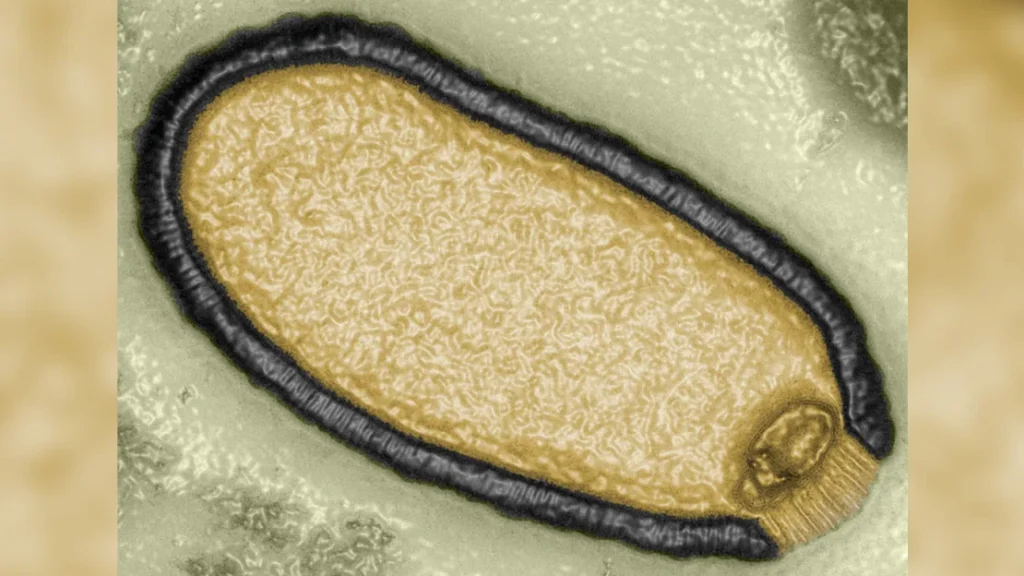
This microphoto shows Pithovirus sibericum, isolated from a 30,000-year-old permafrost sample in 2014, enhanced using computer technology.
The latest strains isolated by Claverie’s team belong to five new virus families, adding to the two previously revived. The oldest, nearly 48,500 years old, was sourced from soil in an underground lake 16 meters below the surface. The youngest, found in a woolly mammoth’s remains, dates back 27,000 years.
The fact that amoeba-infecting viruses remain infectious after such extended periods raises concerns for Claverie. He emphasizes that his research should not be seen merely as a scientific curiosity but as a potential serious public health threat.
Claverie sees these amoeba-infecting viruses as representatives of all possible viruses in permafrost. While many virus traces have been identified, confirming their viability is challenging. However, Claverie asserts that if amoeba viruses are still alive, there is no reason why other viruses in permafrost wouldn’t be capable of coming back to life and infecting their hosts.
Past Instances of Human Infection as a Precedent
Preserved in permafrost are traces of viruses and bacteria that can infect humans. In Alaska, a woman’s lung sample from 1997 contained genomic material from the influenza strain responsible for the 1918 pandemic. Similarly, a 2012 study confirmed genetic signatures of the smallpox-causing virus in the 300-year-old mummified remains of a Siberian woman.
Additionally, an anthrax outbreak in Siberia during the exceptionally hot summers of 2016 affected humans and reindeer. This outbreak was linked to deeper permafrost thawing, allowing ancient spores of Bacillus anthracis to resurface from old burial grounds or animal carcasses.
Birgitta Evengård, a professor emerita at Umea University’s Department of Clinical Microbiology in Sweden, advocates for improved surveillance of potential pathogens in thawing permafrost. However, she urges against adopting an alarmist approach.
As part of the CLINF Nordic Centre of Excellence, a group studying the effects of climate change on infectious diseases in northern regions, Evengård emphasizes the close relationship between our immune defense and the microbiological environment. Evengård notes that our immune defense has evolved in constant interaction with the microbial surroundings.
While acknowledging the potential risk of encountering a virus hidden in permafrost for thousands of years, she highlights the importance of being proactive rather than reactive. According to Evengård, the key to overcoming fear is acquiring knowledge about the situation.
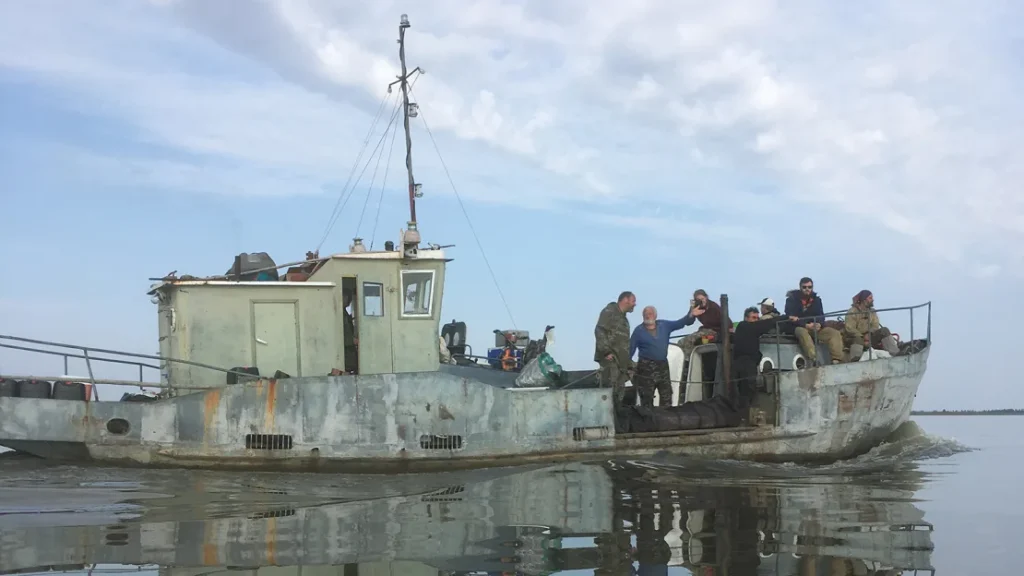
The Potential for Viral Spillover
In reality, scientists are uncertain about the duration of infectiousness once these viruses are exposed to present-day conditions and the likelihood of encountering a suitable host. Not all viruses are pathogenic; some are harmless or even beneficial to their hosts. With a population of 3.6 million, the Arctic remains sparsely populated, resulting in a low risk of human exposure to ancient viruses.
However, the potential risk is expected to rise with global warming. As permafrost thawing accelerates and more people inhabit the Arctic due to industrial activities, the risk of exposure to ancient viruses is likely to increase, warns Claverie.
Claverie is not the only one expressing concern. A team of scientists studied soil and lake sediment samples from Lake Hazen in Canada, located within the Arctic circle. Genetic material in the sediment was sequenced to identify viral signatures and genomes of potential hosts. Their computer model analysis suggested a higher risk of virus spillover in locations near large glacial meltwater inflows into the lake, a scenario becoming more likely with climate warming.
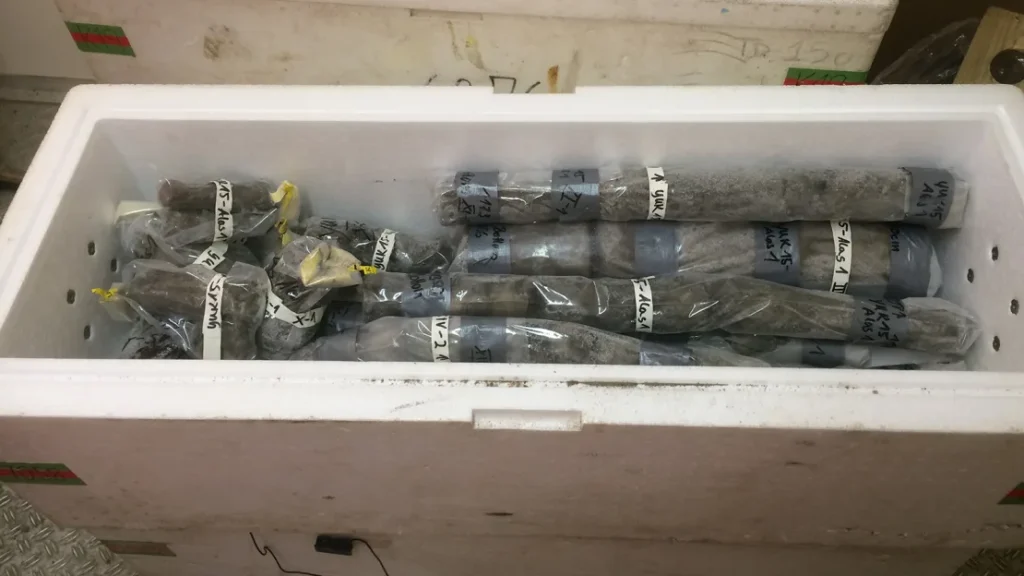
Unknown consequences
The initial step in comprehending the risks posed by warming permafrost is to identify the viruses and other hazards within it, as stated by Miner at NASA’s Jet Propulsion Laboratory. Addressing these challenges involves quantifying the locations, timing, rate, and depth of permafrost thaw.
Thawing permafrost can occur gradually, with as little as centimeters per decade, or more rapidly, as seen in cases of massive land slumps that suddenly expose deep and ancient permafrost layers. This process releases methane and carbon dioxide into the atmosphere, which is an often overlooked and underestimated contributor to climate change.
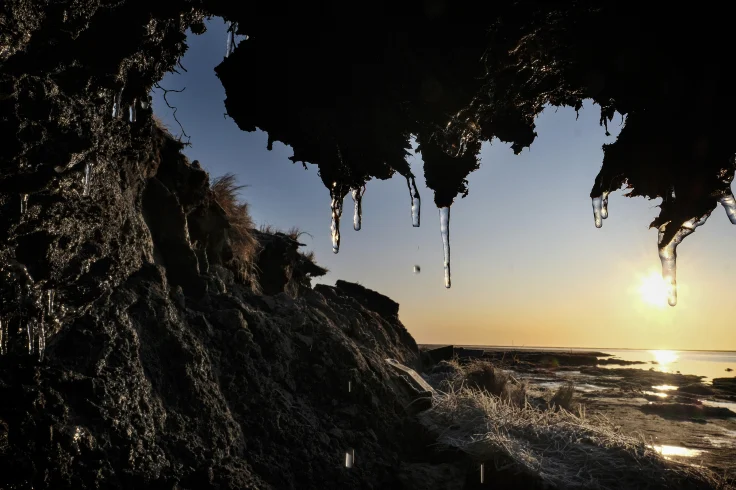
In a 2021 paper published in the scientific journal Nature Climate Change, Miner documented a range of potential hazards currently frozen in Arctic permafrost. These dangers include buried waste from heavy metal mining, chemicals like the banned pesticide DDT, and radioactive materials discarded by Russia and the United States since the 1950s nuclear testing era.
The paper highlighted that abrupt thawing rapidly exposes old permafrost layers, releasing compounds and microorganisms from deeper layers. However, Miner and fellow researchers considered the direct infection of humans with ancient pathogens released from permafrost as “currently improbable.”
Miner expresses concern about what she refers to as “Methuselah microorganisms,” named after the Biblical figure with the longest life span. These organisms have the potential to reintroduce the dynamics of ancient and extinct ecosystems into the present-day Arctic, with unpredictable consequences.
The re-emergence of ancient microorganisms could alter soil composition and vegetative growth, potentially exacerbating the impacts of climate change. Miner emphasizes the uncertainty surrounding how these microbes will interact with the modern environment, deeming it an experiment that no one wants to conduct.
According to Miner, the most prudent course of action is to attempt to halt the thaw, addressing both the broader climate crisis and the release of potential hazards entombed in the permafrost.
The potential release of this ancient virus could raise intriguing questions about its impact on contemporary environments and ecosystems. How do you think it would interact with modern organisms, and what could be the consequences if it were to be accidentally leaked?
